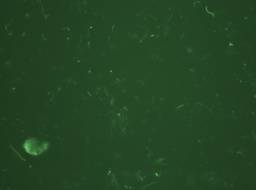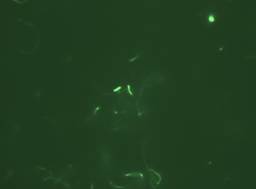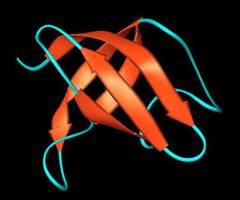1. Research of two component regulatory system (TCSs) in Lactobacillus |
Lactobacilli are important lactic acid bacteria (LAB) that have been extensively used in the fermentation of food, cheese and yogurt production and preparation of other dairy products. Lactobacilli will expose to various stress during the industrial food fermentations, such extremes in temperature, pH and osmotic pressure which may affect properties of the cells. Two-component regulatory system (TCS) is one of the primary mechanisms to sense various stresses, and then elicits appropriate responses. TCS usually consist of histidine protein kinase (HPK) and response regulator (RR). We searched for representative members of the TCSs family of Lactobacilli genomic DNA. We use the degenerate primers complementary to the conserved region in the receiver domains of RR family. We will construct rr and hpk mutants, then study the physiological change in mutant strains, i.e. growth rate, acid tolerance, osmotic pressure tolerance, biofilm formation and adherence ability.
|
|
|
Fig 1-1. The Morphology of Lactobacillus
observed by SEM. |
Fig 1-2. The Morphology of Lactobacillus
observed by SEM.
|
2. Signature-tag mutagenesis (STM) |
STM is based on negative selection, to identify mutations in a gene which is essential for resisting environmental stress or during the colonization process. We will electroporate the transposomes (transposase combine with trasnposon) into the lactobacilli, then constructed a random mutational library. |
3. Construction of an integration vector for Lactobacillus |
Temperate bacteriophage ΦAT3 integrates its genome into the host chromosome of Lactobacillus casei ATCC 393 at the transfer RNAArg gene. The region of ΦAT3 genome involved in site-specific recombination has been identified. An open reading frame, has been found immediately upstream of the phage attachment site (attP), encoded a 389-amino-acid polypeptide with significant similarity in its C-terminal domain to site-specific recombinases of the integrase family. The junctions of the prophage with the genomes of its hosts have been determined, identified as the host attachment site (attB), which has a common 15-nucleotide core region with attP. Nonreplicative plasmid based on the ΦAT3 integrate (int) and attP site was constructed. This vector transforms to some heterologous host and integrated into the host genome stably over hundreds generations. The integration vector is a useful genetic tool for studying lactobacillus.
|
400X

|
1000X

|
Fig 2-1. GFP expression in Lactobacillus. |
Fig 2-2. GFP expression in Lactobacillus. |
| 4. Research of cold shock protein (CspA) in Lactobacillus |
| To adapt temperature downshift,bacteria trigger the so-called cold shock response and induce the synthesis of cold shock protein that molecular weight is about 7 kD. They combined single strand DNA and RNA and regulate the physiological function. Cold shock protein was found in E. coli first and worked as adapting to lower temperature and executed a lot of important physiological function. The cold shock protein structurally containing a β-barrel that consist of five antiparallel sheets will be RNA chaperone that bind mRNA and prevent the formation of the secondary structure of mRNA and enhance the translation. |

Fig 3. The structure of E. coli CspA.
|
Ref: http://www- nmr.cabm.rutgers.edu/photogallery/structures/html/page1.html
|
|
|

